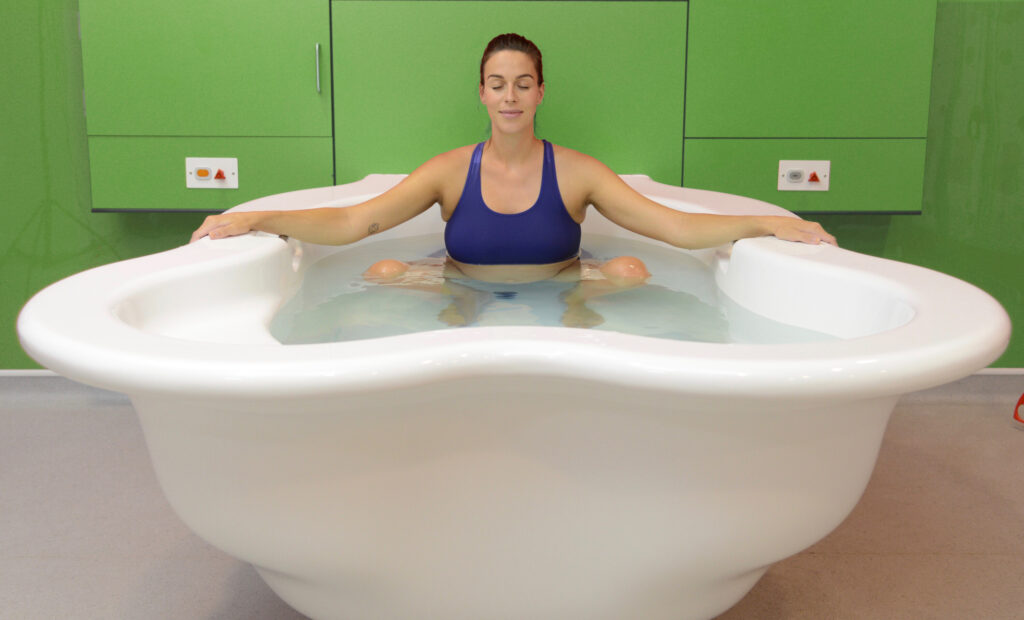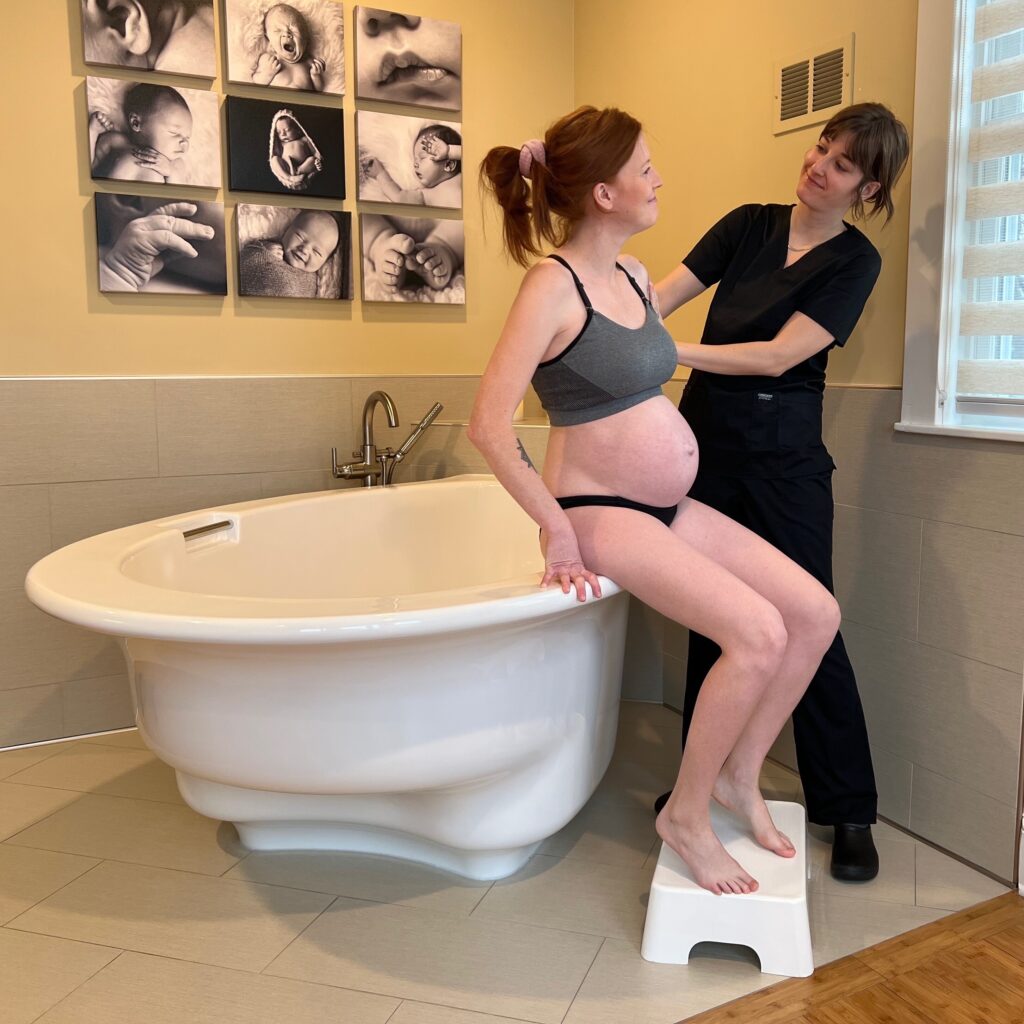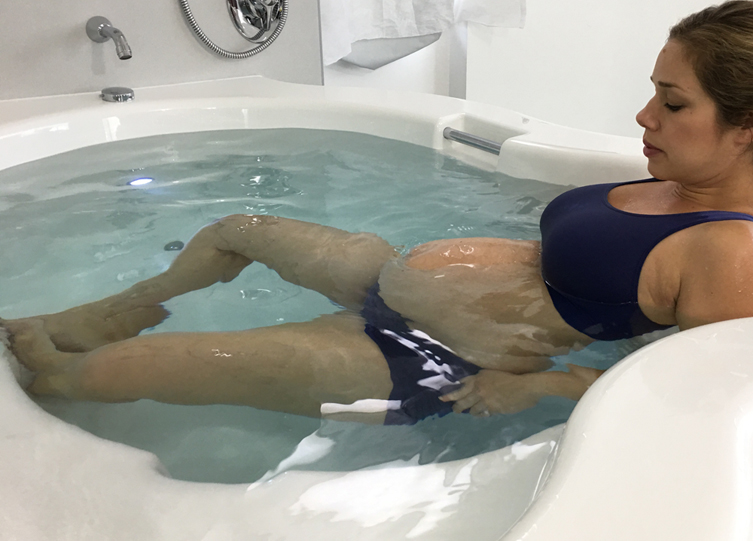Nadine Massiah MBBS
Obstetrics and Gynaecology Department
Furness General Hospital
Barrow in Furness UK
Vincent Bamigboye MRCOG
Obstetrics and Gynaecology Department
Furness General Hospital
Barrow in Furness UK
Citation: N. Massiah & V. Bamigboye : Shoulder dystocia at water birth . The Internet Journal of Gynecology and Obstetrics. 2008 Volume 9 Number 1
Abstract
Health professionals providing obstetric care should be familiar with guidelines for shoulder dystocia. Regular drills are fundamental to the improvement of team work, enhancing communication skills and essential for good outcomes5.
Obstetric birthing simulators should be considered since they significantly improve competence in the management of shoulder dystocia6,7.
Learning and teaching are continuous processes in our practice. Optimal training is required to minimize morbidity and mortality of this obstetric complication.
Case Report
A 33 year old, para 1 lady presented in active labour at 40 weeks gestation. The abdominal findings were fundal height 39 cm, longitudinal lie and cephalic presentation.
Vaginal examination revealed cervical dilatation of 5 cm, occipito-anterior position of the foetal head at station minus two. The membranes were intact.
The booking investigations, dating and anomaly scans were found to be normal. The current pregnancy was uncomplicated. The first pregnancy and vaginal delivery were uneventful.
The pool was requested for labour and delivery. The labour progressed well to full dilatation. There was good descent of the head with active pushing. After delivery of the head, the shoulders were impacted. Mc Robert’s manoeuvre and suprapubic pressure were attempted without success.
The patient was moved from the birthing pool to the bed. Mc Robert’s manoeuvre, suprapubic pressure and downward traction of the head led to delivery of the anterior shoulder followed by the remainder of the body.
The time interval between the delivery of head and body was 3 minutes. The estimated blood loss was 350 mls. The neonate had a birth weight of 4200g with an Apgar score of 8, 9 and 10. Paediatric examination of the neonate was normal.
Discussion
The incidence of shoulder dystocia at water birth is 0.16%1. This case highlights that it is vital to be prepared for emergencies even with low risk women. They may occur in unfamiliar situations. Since the patient was wet, her safety whilst being moved to the bed was of great concern.
This was done carefully but quickly. It is estimated that the umbilical cord pH falls by 0.04 unit/min after delivery of the head2. A delay in delivery of the shoulders may result in cerebral hypoxia, cerebral palsy or death.
Forty seven percent of deaths from shoulder dystocia were within 5 minutes of delivery of the head3. The principles of management were widening of the pelvic diameters and repositioning the foetal shoulders into the oblique pelvic diameter to facilitate delivery4.
Health professionals providing obstetric care should be familiar with guidelines for shoulder dystocia.
Regular drills are fundamental to the improvement of team work, enhancing communication skills and essential for good outcomes5.
Obstetric birthing simulators should be considered since they significantly improve competence in the management of shoulder dystocia6,7.
Learning and teaching are continuous processes in our practice. Optimal training is required to minimize morbidity and mortality of this obstetric complication.
References
1. Thöni A, Zech N, Ploner F. Giving birth in the water: experience after 1,825 water deliveries. Retrospective descriptive comparison of water birth and traditional delivery methods. Gynäkologisch-geburtshilfliche Rundschau 2007; 47(2):76-80.
2. Wood C, Ng KH, Hounslow D, Benning H. Time – an important variable in normal delivery. Journal of obstetrics and gynaecology of the British Commonwealth 1973; 80(4):295-300.
3. Confidential Enquiries into Stillbirths and Deaths in Infancy. Fifth Annual Report. London: Maternal and Child Health Research Consortium, 1998. (s)
4. Draycott TJ, Fox R, Montague IA. Shoulder dystocia. RCOG Guideline No. 42. London:RCOG 2005.
5. Sorensen SS. Emergency drills in obstetrics: reducing risk of perinatal death or permanent injury. JONAS Healthcare Law Ethics and Regulation 2007; 9(1):9-16.
6. Deering S, Poggi S, Macedonia C, Gherman R, Satin AJ. Improving resident competency in the management of shoulder dystocia with simulation training. Obstetrics and Gynecology 2004;103(6):1224-8
7. Crofts JF, Bartlett C, Ellis D, Hunt LP, Fox R, Draycott TJ. Training for shoulder dystocia: a trial of simulation using low-fidelity and high-fidelity mannequins. Obstetrics and Gynecology 2006; 108(6):1477-85.









